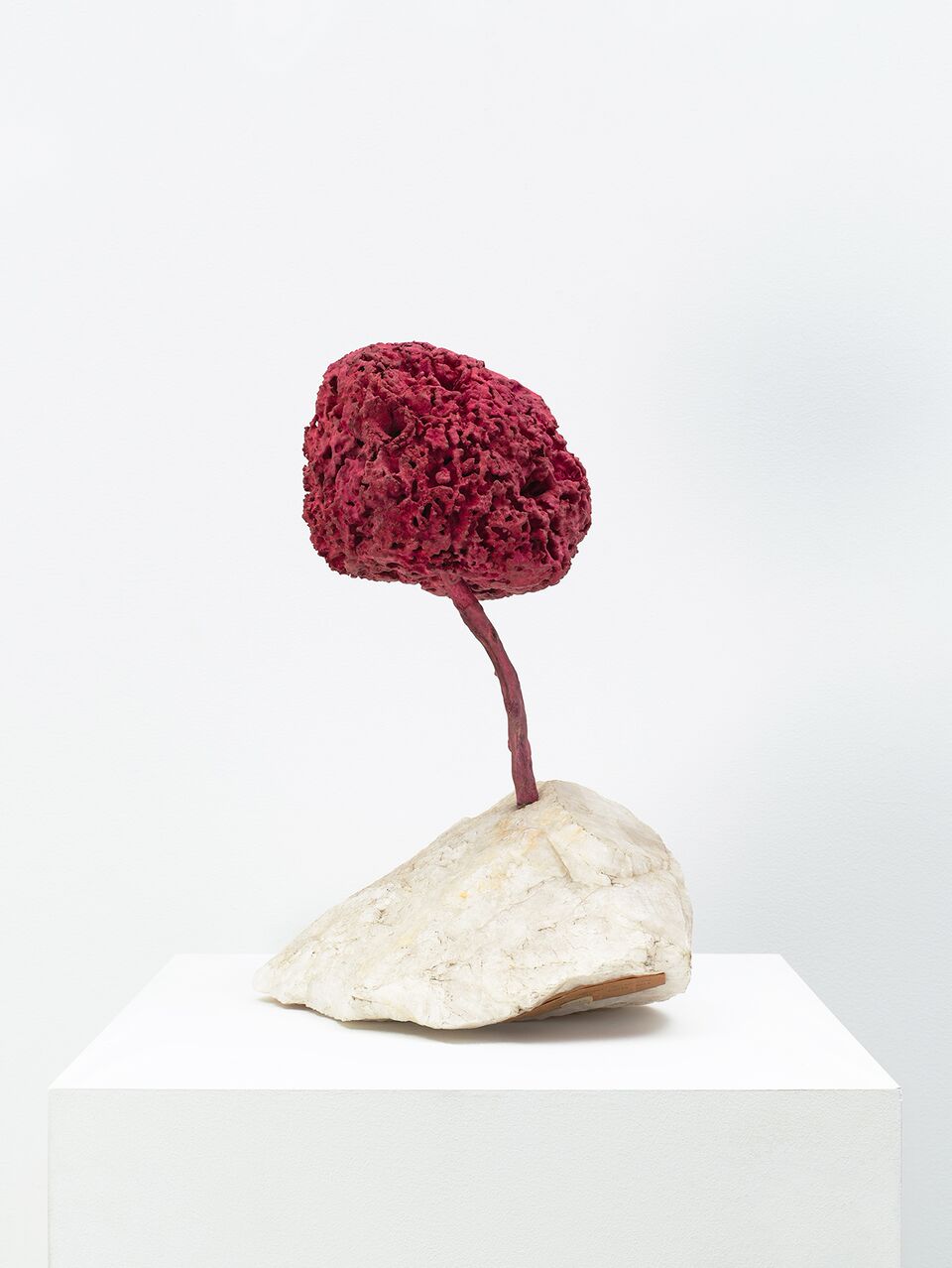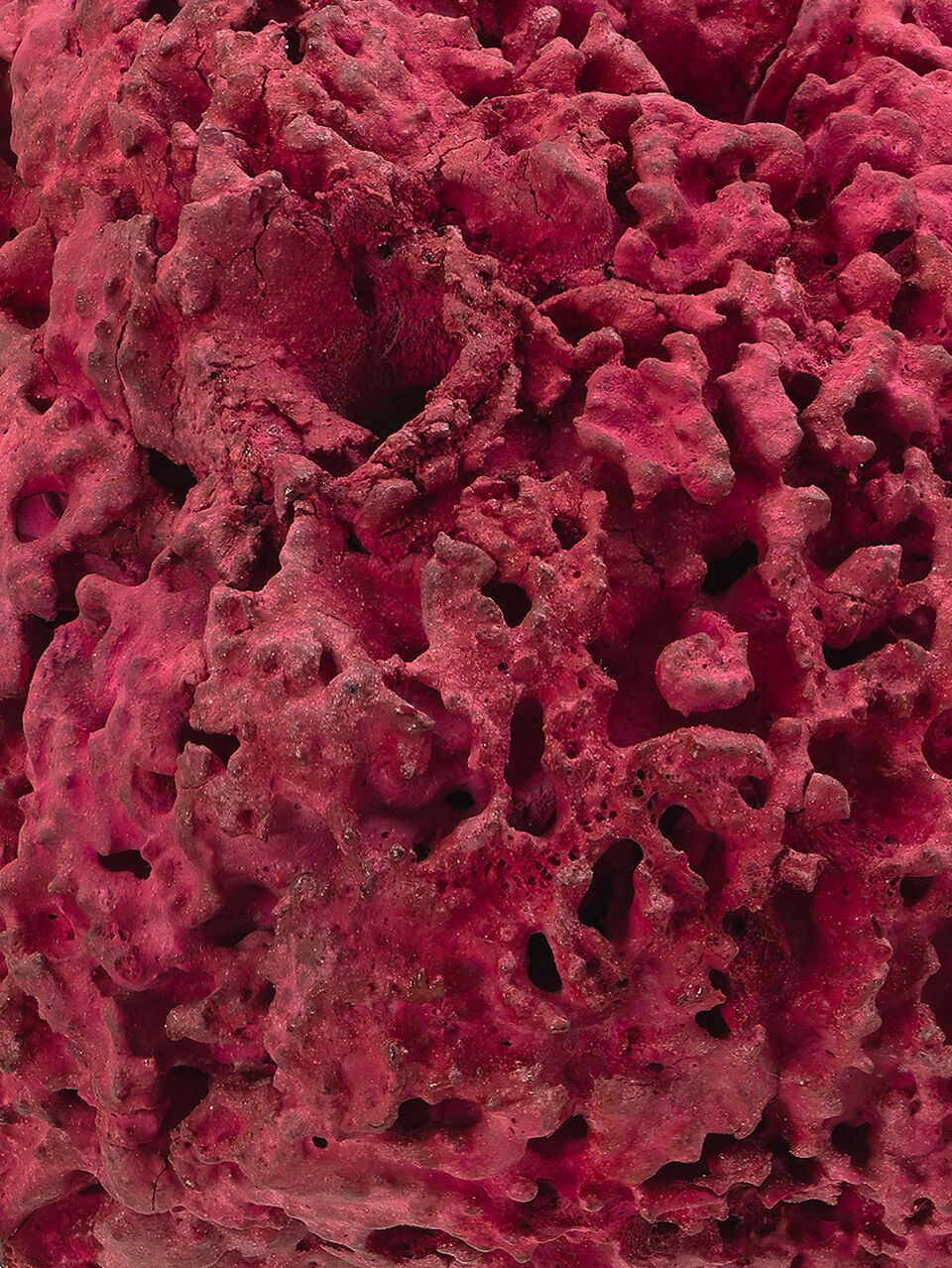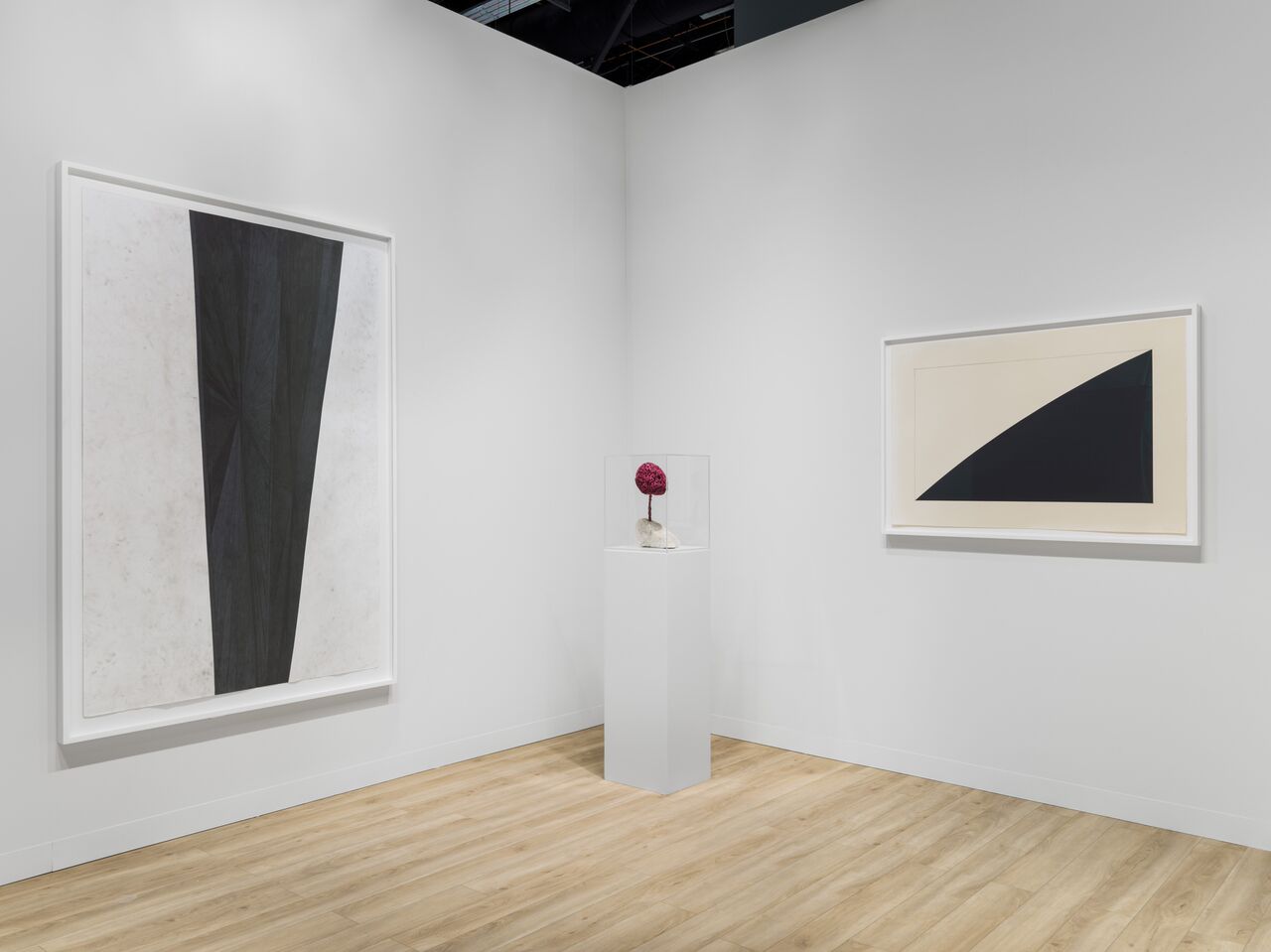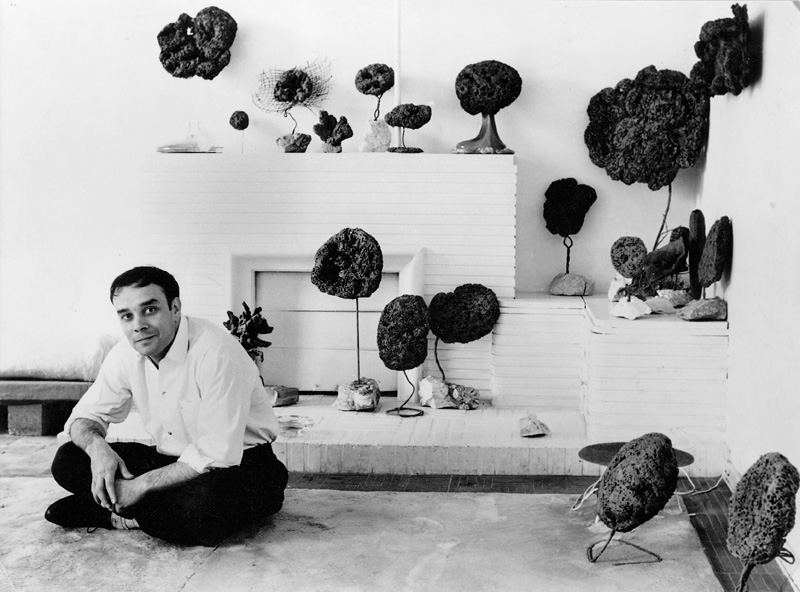Art Basel Miami Beach Spotlight: Yves Klein
The formal constructions of each artwork presented by Lévy Gorvy at Art Basel Miami Beach profess concerns simmering just beneath the surface. Born in 1928 in Nice, the child of two painters, Yves Klein refused to play by the rules. He denounced both the academy and the avant-garde, proclaiming himself a revolutionary genius.
Enjoy this spotlight on Untitled Pink Sponge Sculpture (SE 204) (1959), on view at Lévy Gorvy’s presentation at Art Basel Miami Beach, Booth E6.
—
Yves chooses madder rose…Having thus acquired the third element, Yves Klein, can, from now on, present the cosmological trilogy of personal transmutation of colors: ultramarine blue IKB, gold, and pink…The transfer to monopink in the monochrome trilogy is revealing. Madder rose represents the Holy Spirit before the gold of the Father and the blue of the Son; gold for immateriality and blue for sensibility.
— Pierre Restany
According to Paul Wember’s canonical 1969 catalogue raisonné, SE 204 is one of only six Sculptures éponges executed in the artist’s “madder rose” color that is mounted on a natural stone base. Its pink makes up a third of Klein’s unique color triad, with the other two being gold and his famous International Klein Blue (IKB). The inclusion of natural stone as a base is extremely rare in the artist’s oeuvre, incorporating an element of earthly familiarity to balance out the the sponge’s otherworldly quality. The suffusion of the sponge’s ridges and craters with the densely concentrated pink pigment causes its constant transformation under the incidences of light, evoking its growth and former life on the ocean floor. The color pink held a deep symbolic significance to Klein, representing (to him) the Holy Spirit, and, by extension, incarnation, i.e., the spirit made flesh. Unlike his registered IKB pigment, Klein had a broader definition of “rose,” using the term to indicate both pink and crimson, which he used interchangeably in his “monopink” works to allude to all manner of organic materials: coral, flowers, and human flesh. The artist’s appropriation of Christian iconography is aligned with the hue’s significance in European art history, where pink recalls the flush of the Virgin Mary’s cheek; she is also often depicted wearing magenta robes, which symbolized her earthly nature.
Klein’s preoccupation with sponge as an artistic medium would last from 1959 until his untimely death at the age of 34, in 1962. In the mid 1950s, the artist began to experiment with the absorbent function of sponges as a way of removing the trace of the artist’s hand from his monochrome canvasses. “While working on my paintings in my studio,” he recalled, “I sometimes used sponges. Evidently, they very quickly turned blue! One day I perceived the beauty of blue in the sponge, this working tool all of a sudden became a primary medium for me. The sponge has that extraordinary capacity to absorb and become impregnated with whatever fluid, which was naturally very seductive to me. Thanks to the natural and living nature of sponges, I was able to make portraits to the ‘readers’ of my monochromes, which, after having seen and traveled into the blue of my paintings, returned from them completely impregnated with sensibility, just as the sponges.”
More stories
Lévy Gorvy Announces Mickalene Thomas: Beyond the Pleasure Principle
New York | London | Paris | Hong KongJun 3, 2021
PALM BEACH GALLERY HOP & CARPENTER VIOLIN TRIO
Palm BeachMar 6, 2021
Donate Clothing in celebration of Pistoletto's Rebirth Day in New York
New YorkDec 21, 2020
Lévy Gorvy updates its Chinese name to
"厉蔚阁" with appointment of Rebecca Wei in Asia
Hong Kong
Dec 15, 2020
In Conversation | Dominique Lévy & Loa Haagen Pictet
Dec 5, 2020
Pierre Soulages on CBS Sunday Morning
Nov 8, 2020
Rebecca Wei Named Founding Partner of Lévy Gorvy Asia
Sep 24, 2020
LÉVY GORVY TO OPEN A PARIS GALLERY SPACE
Jul 2, 2020



















